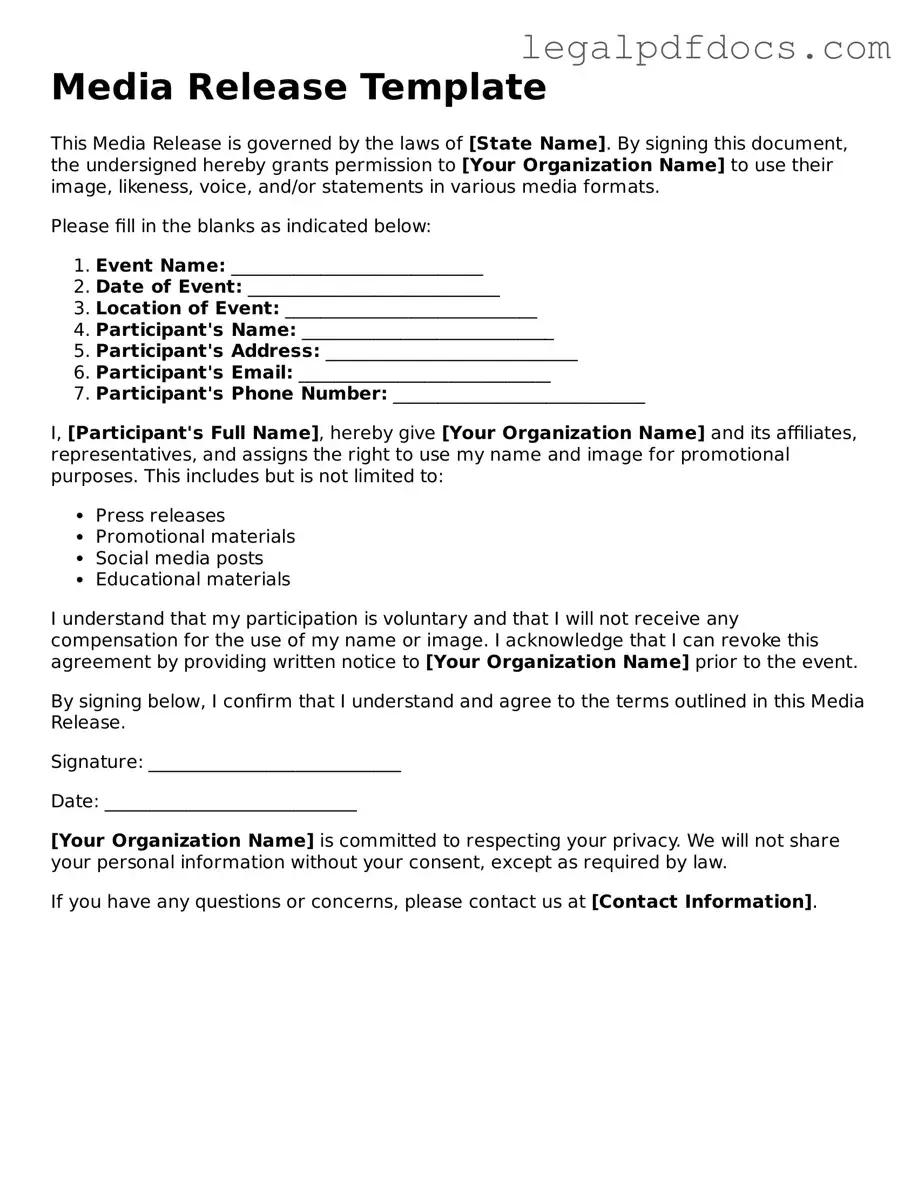The Media Release form plays a crucial role in the intersection of personal rights and media engagement. It serves as a legal tool that individuals use to grant permission for their images, voices, or other personal attributes to be captured and used in various media formats, including photographs, videos, and promotional materials. By signing this form, individuals can specify the scope of usage, ensuring that their likeness is used in ways they are comfortable with. This document often includes clauses that outline the duration of the permission granted, any compensation involved, and the specific contexts in which the media may be utilized. Understanding the nuances of a Media Release form is essential for anyone involved in creative projects, as it protects both the creator's rights and the individual's privacy. Whether you're a photographer, filmmaker, or simply someone seeking to share your story, being well-informed about this form can help you navigate the complexities of media representation with confidence.
